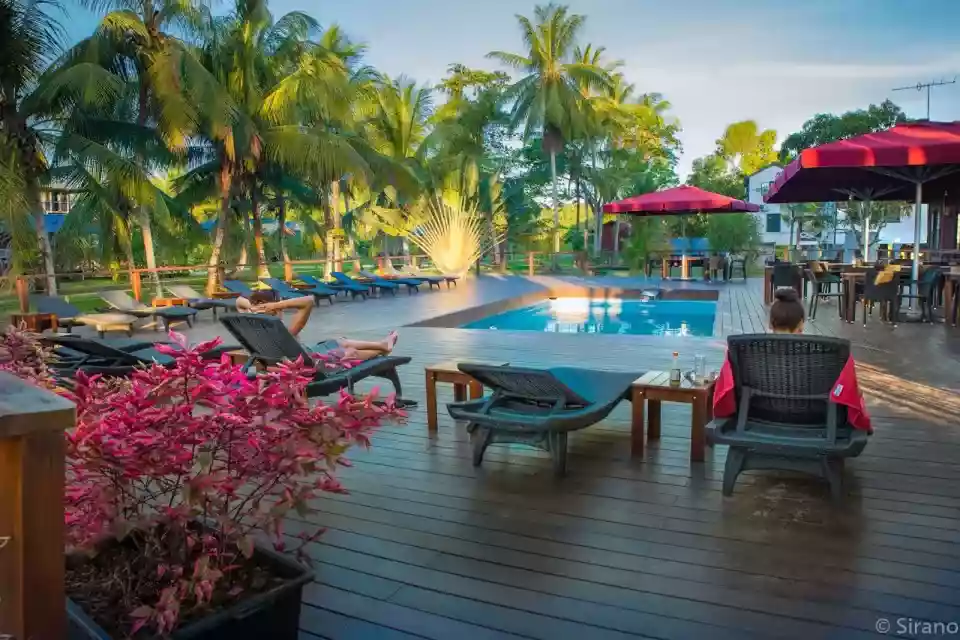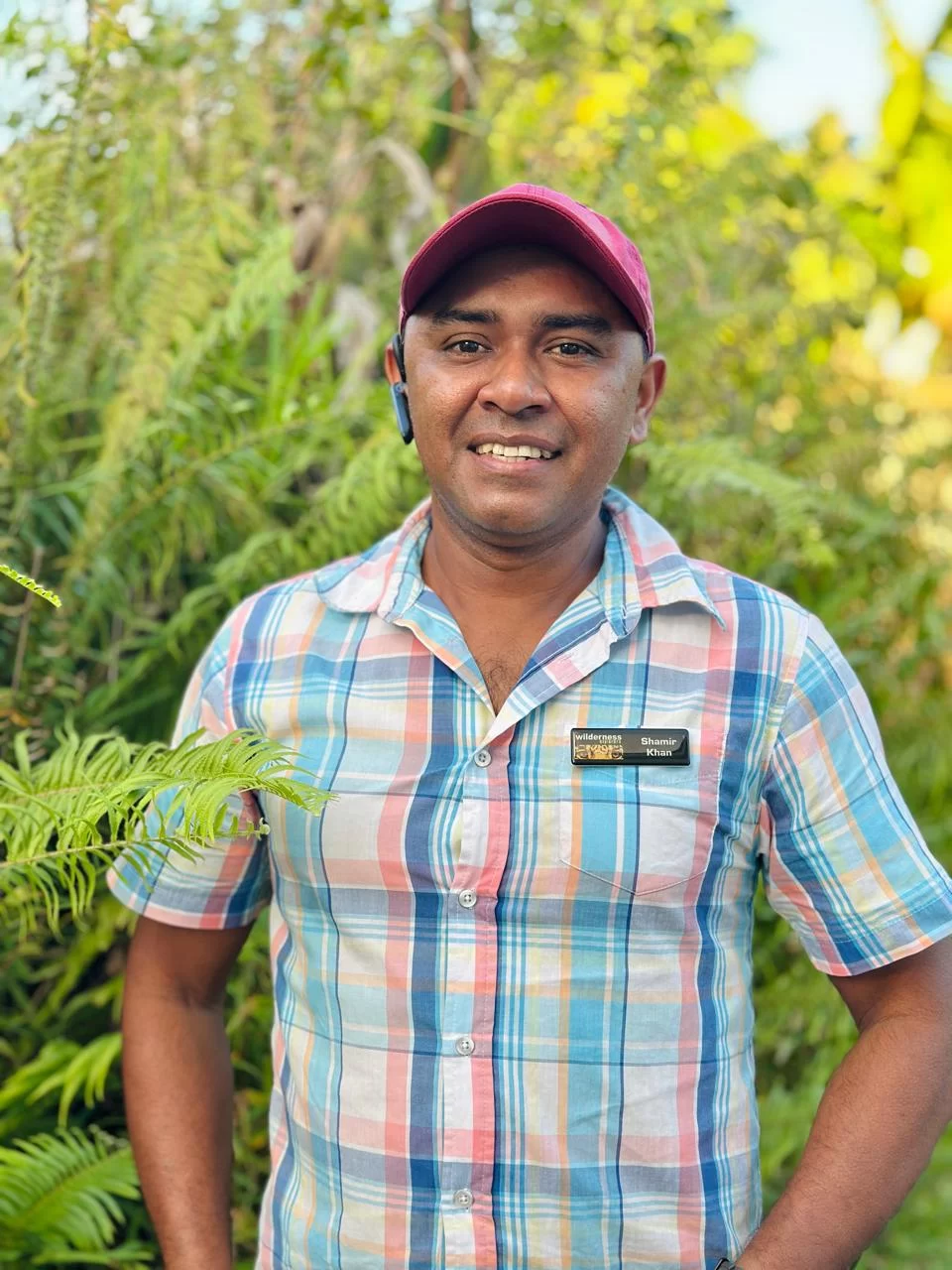Guyana, a small diamond on the northeast coast of South America, east of Venezuela and north of Brazil, is stunningly beautiful and has amazing biodiversity. Its untouched rainforests, expansive savannas and winding rivers make for an unforgettable encounter with wild animals. The country boasts rich ecosystems and extensive wildlife, making it a particularly great destination for bird lovers. A huge percentage of the land is covered by dense, undisturbed rainforests and wetlands that provide homes for various rare species of birds, some of which can only be found here.
In this article, we will explore some of the areas to visit to see Guyana’s wildlife, from South America’s famous Jaguars to its colourful birds, and we’ll explain why a Guyana wildlife tour should be on top of your bucket list.
Unique Biodiversity in Guyana
Diverse Ecosystems
Guyana has vast ecosystems – dense rainforests, wide-open savannahs, and pristine wetlands – that provide a home for many different kinds of creatures, making it a heaven for all nature lovers.
Iconic Wildlife Species
Some of South America’s most iconic animals live in Guyana, such as rare Jaguars that roam through jungles at night, Giant River Otters that swim along watercourses during the day, and majestic Harpy Eagles that rule over the rainforest canopy.
Conservation Importance
Guyana’s unique ecosystems and natural treasures can be threatened by development projects such as mining or logging operations, and so conservation efforts and sustainable tourism play an important role in protecting them now and for future generations. There are many active conservation projects in the country that welcome your support.
Planning Your Guyana Wildlife Adventure
Doing Research & Preparation
Before going on a trip to see animals in Guyana, it’s best to study the various regions where the species you particularly want to see can be found. Look for available tours to those areas, and work out what gear will come in handy – from clothes suitable for different weather conditions to the most appropriate photography equipment, camera lenses, etc. Below, we give a list of the most popular wildlife locations and the best birdwatching areas.
Choosing the Best Time for Visiting
It is worth mentioning that the climate of Guyana changes several times a year, so figuring out the right time to go should be based mainly on your wildlife-watching preferences. The dry seasons are considered prime wildlife viewing times.
Mandatory Travel Documents & Vaccinations
Before entering Guyana, travellers should have a valid passport, visas if needed, and up-to-date vaccination certificates. Consult your country’s foreign office website for advice, the Guyana Embassy or High Commission offices’ websites for visa information, and check with healthcare professionals regarding required immunizations.
Packing Tips for Wildlife Tours
When it comes to packing for a wildlife tour, there are a few things that should not be left behind: lightweight, breathable clothes suitable for both hot and wet tropical climates; environment-friendly insect repellent; sunblock cream (lots of it); a good pair of binoculars as well as sturdy hiking boots if you are planning to do any trail walking; and camera gear, including spare batteries, sunglass and hat.
Must-Visit Places in Guyana
Kaieteur Falls – the World’s Largest Single-Drop Waterfall
One cannot afford to miss out on visiting Kaieteur Falls because where else could you see a river fall 741 feet into a deep canyon? It is also home to Guianan Cock-of-the-rock and Golden Frog and four species swifts roost behind the waterfall.
Iwokrama Rainforest Reserve – Biodiversity Hotspot
Take time exploring the Iwokrama rain forest reserve, which boasts an incredible number of different species living together in a small area. This biodiverse richness is thanks mainly to the high levels of rainfall received annually, which fosters the growth of diverse plants that in turn attracts various animals to make their homes here.
Rupununi Savannah – Wildlife Paradise
Rupununi savannahs offer open grassy plains covered with scattered trees, providing perfect cover from which to observe large scrubland species, such as Giant Anteaters or Capybaras.
Kanuku Mountains Wilderness Area – Pristine Wildernesses Exploration Site
For those looking for more adventure, the Kanuku Mountains wilderness region provides an opportunity to trek through dense forests still untouched by human activity. You will find hidden gems along the way as well as having a chance to see some rare wild creatures that never come close enough otherwise! Here you alos have a good chance to see a Harpy Eagle and the Goliath Bird-eating spider.
Encounters with Animals in Guyana
Birds of the Guiana Shield
The Guiana Shield is the name for an area covering 270 million hectares in Guyana, Suriname, French Guiana, Venezuela, parts of Colombia and northern Brazil. It is one of only four remaining pristine rainforests to be found in the world.
Being part of the Guiana Shield explains why Guyana has more than 800 bird species, making it a paradise for birdwatchers. Look deep into forests and discover toucans, parrots, and the dazzling Guianan Cock-of-the-rock with its bright plumage. Look up at the treetops if you want to see Harpy Eagles – the largest and most powerful eagle known as the flying wolf n the Americas, known as rainforest sentinels.
The Best Birdwatching Spots
The Iwokrama Forest is known to be among the best places for birdwatching due to its size and diversity. This rainforest reserve covers almost one million acres and sits within the Guiana Shield.
In its thickets you may come across amazing creatures such as the Guianan Cock-of-the-rock, different types of macaws and even Harpy Eagles – which are very rare elsewhere but thrive well in these parts because they have numerous Guiana Shield endemic species are found here.
Kaieteur National Park also offers an excellent opportunity for ornithologists visiting Guyana; it is adjacent to Kaieteur Falls (one of the highest waterfalls on earth). The falls themselves attract numerous bird species such as Orange-breasted Falcons, since their surrounding areas serve as breeding grounds besides providing shelter all year round. Additionally, thanks to the region’s peculiarly humid climate, enthusiasts may have the unique chance of seeing the endemic Golden Frog.
Another rarity, White-chinned Swifts can often be observed at this site alone, darting through spray columns created by the cascading waters.
If you want more variety in terms of environment, while still enjoying fantastic avifauna, then consider going to the Rupununi Savannahs instead, where the contrast between habitats is much more obvious compared to the rest of Guyana frequented by birdwatchers. This area contains both grasslands and wetlands, thus attracting different many types of birds, including Jabiru Storks and Red Siskins, plus various ibises, among others.
There are also patches of small woodlands scattered over these plains, known as gallery forests. These act like oasis providing additional birding opportunities for species at different points in their lifecycles. Visitors can explore on foot or take boat rides since much land here is submerged during the rainy season. Approaching by water makes it possible for people to reach remote corners of the habitat where some of the most elusive birds can be found.
FAQs
Q1: When is the most appropriate time to take a wildlife trip to Guyana?
A1: The best times for wildlife trips in Guyana are from September to November and February to April. These are months with less rain when the animals are more active and weather conditions are more conducive to spending the day in the open.
Q2: How can I help protect wildlife in Guyana?
A2: To contribute to conservation efforts within this country, choose environmentally friendly tours, donate money directly to local conservancies, or participate in community-based tourism programs.
Q3: Are wildlife tours in Guyana suitable for families with kids?
A3: Yes, there are many family-oriented excursions that provide children with learning opportunities while giving a wider chance for all members of the household to reconnect with nature.
Q4: What camera equipment do you need for wildlife photography in Guyana?
A4: If you plan on taking pictures of animals from far away, then it would be advisable to carry a DSLR or mirrorless camera fitted with a telephoto lens of between 200mm and 400mm. A tripods would also be a good idea, although it should be strong enough to stabilize your shots even during heavy downpours. Waterproof bags and camera covers capable of safeguarding against moisture damage arising not only from rain and waterfall spray but also from humidity changes, are advised.
Conclusion
The singular character of Guyana guarantees a memorable wildlife-watching holiday. For keen birders there is a wealth of interesting species in this country and a myriad of different habitats to explore. With a little advance preparation and the advice of local wildlife experts, you cannot pick a better spot in the world for a once-in-a-lifetime experience. Chances are, your Guyana wildlife tour will lead to many more trips to this fascinating corner of South America!




